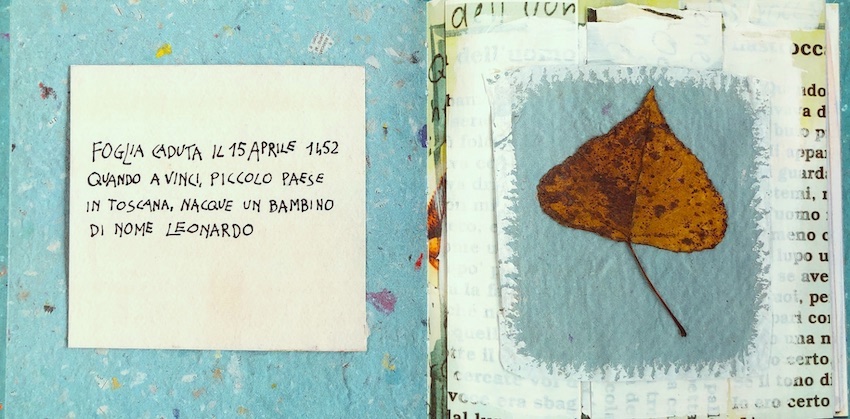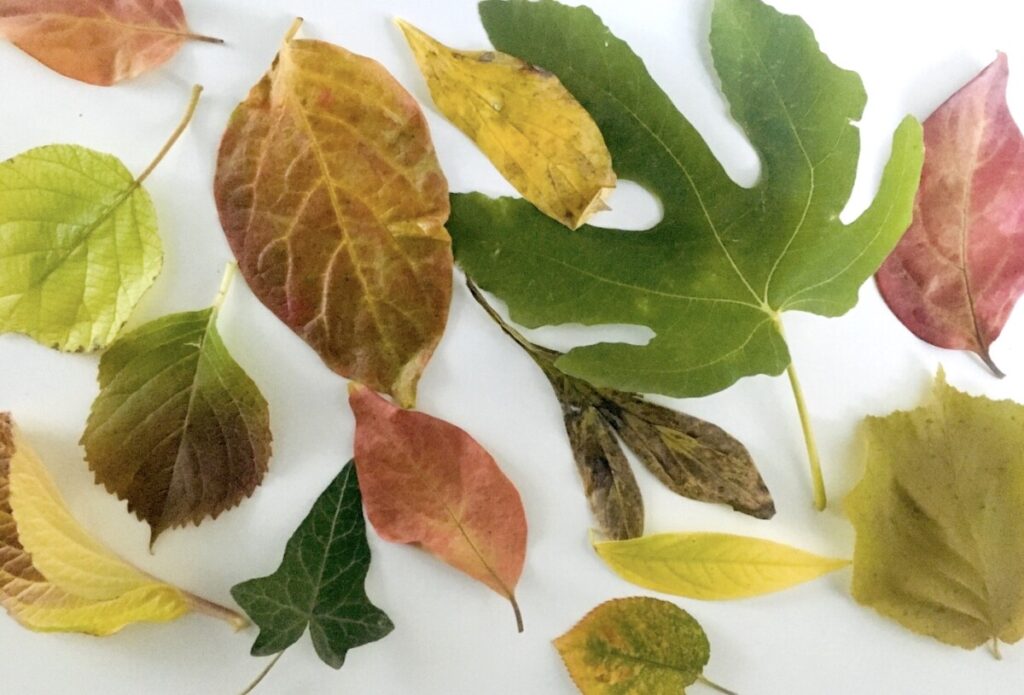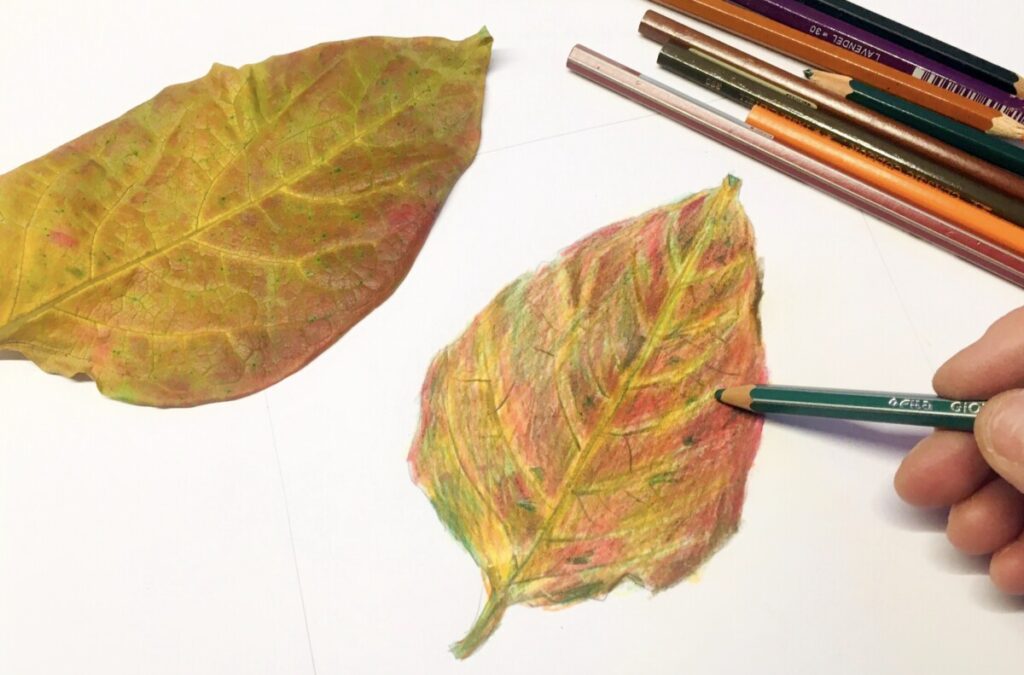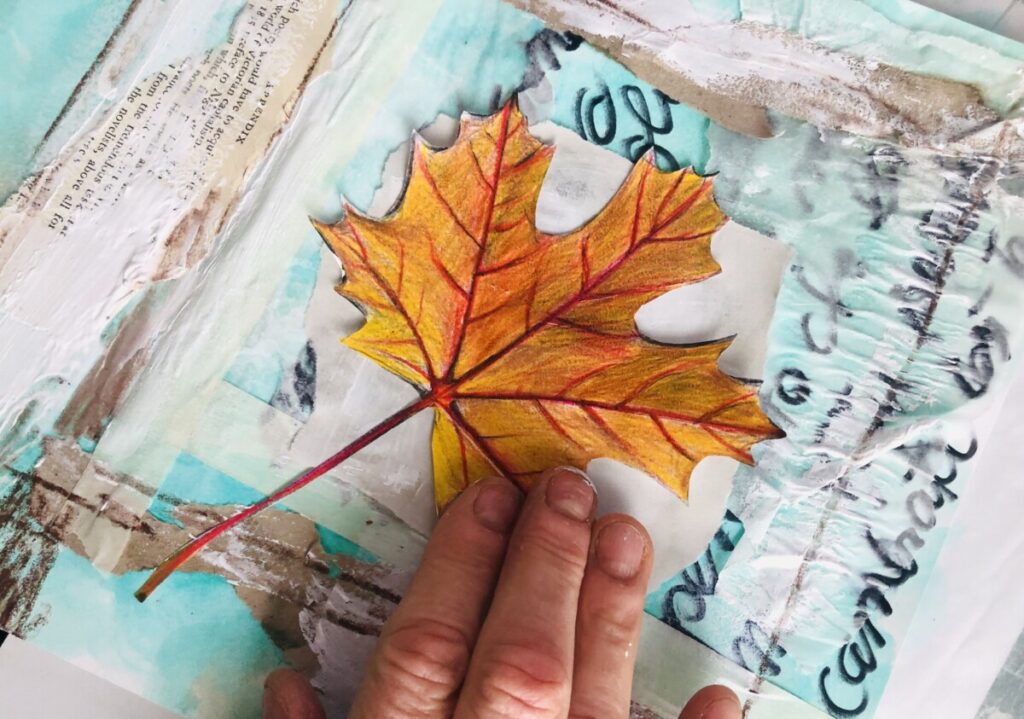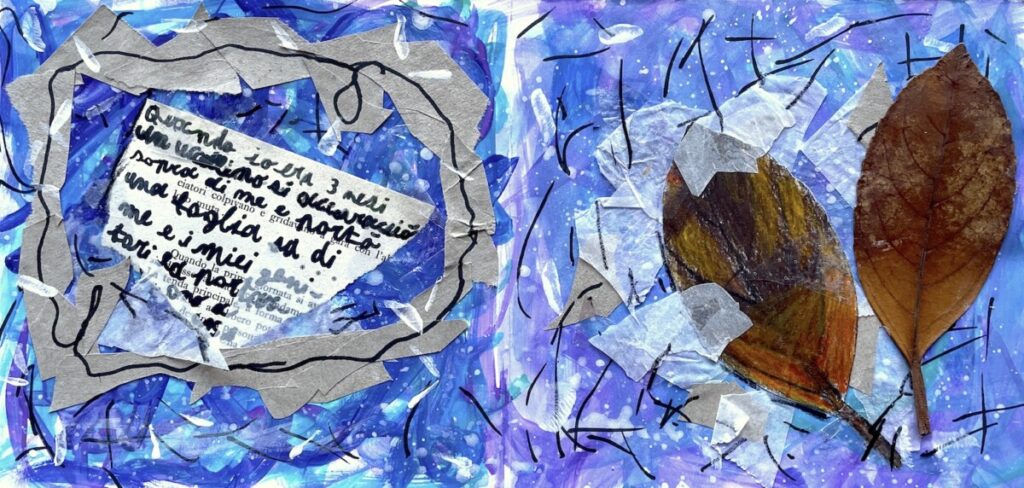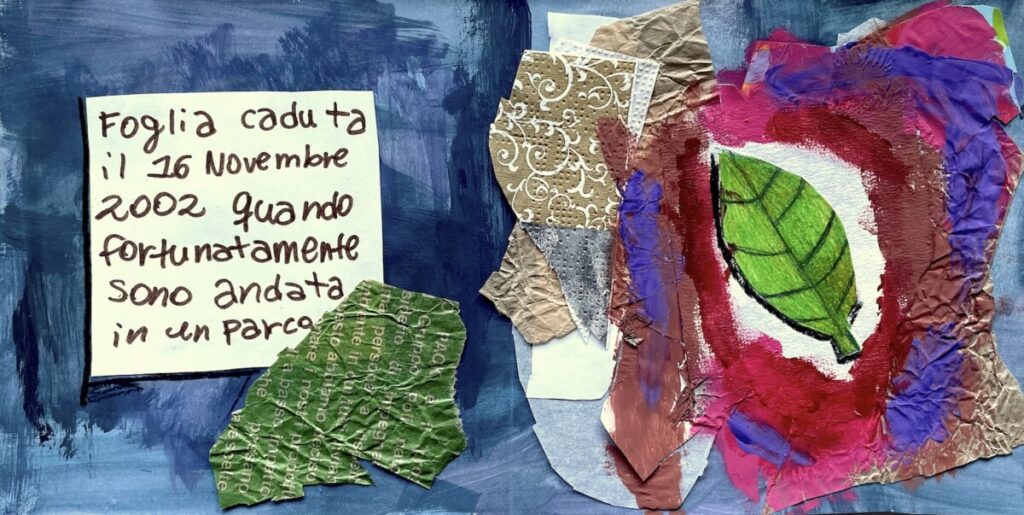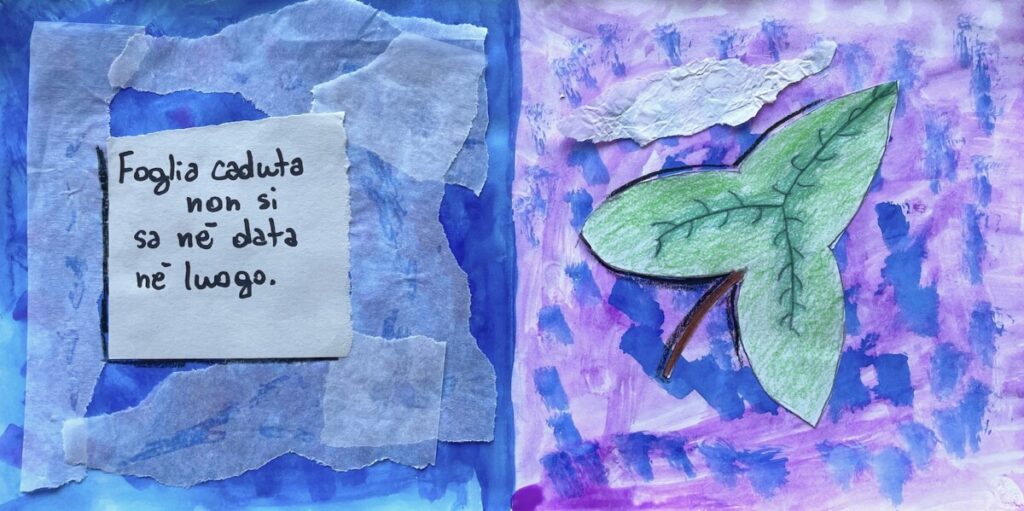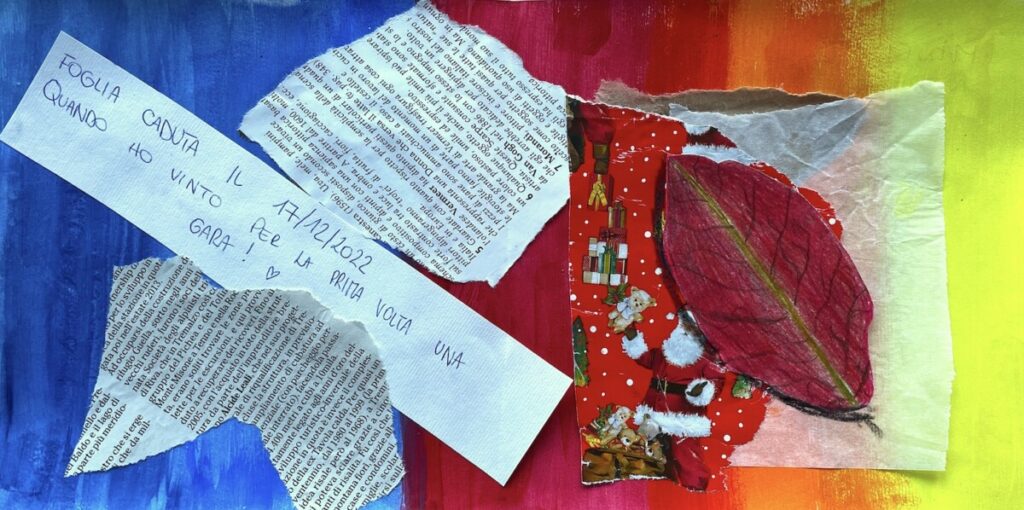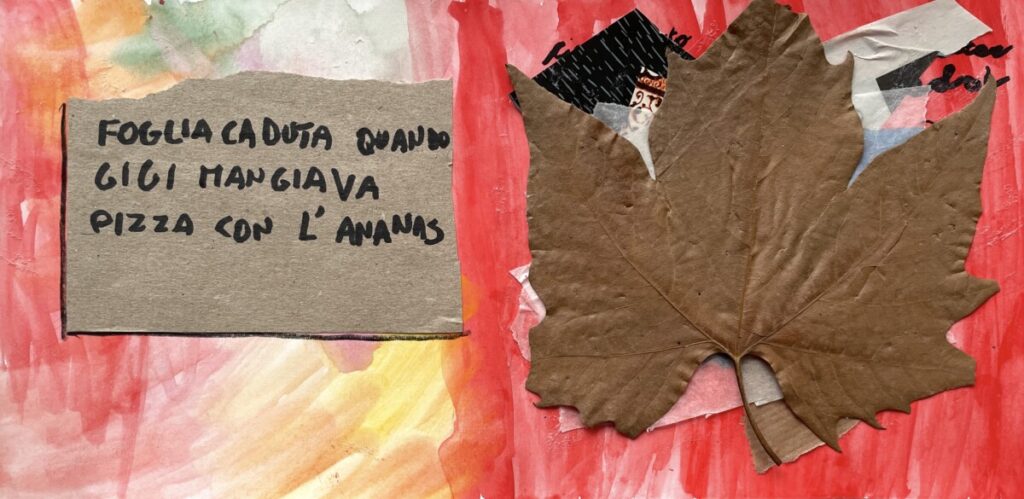For this activity we were inspired by Antonio Catalano’s small picture book “Museum of Fallen Leaves” (advertising link). With this book the author guides us in reading the little daily wonders often invisible to our distracted eyes, like fallen leaves. We discussed with the students what can actually be exhibited and valued in a museum. We discussed about what in our eyes can represent an heirloom, a rarity, a valuable object, representative of a particular moment in our life, in our childhood, or a moment in a relationship. So we asked ourselves: can we value and make poetic an insignificant and banal thing like a fallen leaf?
Inspired by this book, we presented a moment in our lives by linking it to a simple object like a fallen leaf, a game but also a story and an invitation to look, imagine, listen. To create our little museum of fallen leaves, we first collected a leaf and copied it with colored pencils. At the same time we also thought and INVENTED a SHORT HISTORY for this leaf. As the book suggests, it may have to do with a particular moment in our life or someone else’s life, a historical moment or our memory…
For this activity about museums, life copy and still life you will need:
- A leaf to copy
- A sheet of normal paper on which to copy the leaf
- Coloured pencils
- Drawing sheet
- All types of paper: we can use wrapping paper, newspaper, tracing or baking paper, toilet paper or tissue paper, bread paper, book pages, notebook pages, recycled paper, wrapping paper…
- Ruler, scissors and glue
First we make the base where the story and the leaf will be glued, cutting out a DRAWING SHEET measuring 33 x 16.5 cm and folding it in two like a book. The leaf must fit in the 16.5×16.5cm square on the right.
As a first step, paint the background with watercolors, choosing COMPLEMENTARY colors to those of our LEAF, working freely and painting the entire surface.
To copy the leaf we used a sheet of normal paper, drawing the outline in pencil and then coloring with colored pencils. To copy the colors as faithfully as possible we created a colored base with the lighter colors and then we superimposed darker colors and details, proceeding in layers and trying to get as close as possible to the real colors.
Once the watercolor base was dry, we proceeded in layers, imitating the variety of surfaces created by the artist: first of all, we wrote a sentence with a brush or felt-tip pen, the purpose of this writing is only as a graphic and decorative texture, for subsequent layers.
We then glued and assembled different pieces of paper: we can use wrapping paper, newspaper, tracing or baking paper, toilet paper or tissue paper, bread paper, book pages, recycled paper.
A further step may be to superimpose white tempera or plaster priming on some parts, to enrich the material aspect of this mixed technique. It is also possible to intervene with further signs with oil pastels or other materials in order to prepare a central SPACE, a neutral paper or a light or dark area where to paste the leaf.
Una volta preparata la base a tecnica mista si ritaglia la foglia disegnata e si incolla sulla pagina, aggiungendo l’ombra con la matita nera per renderla più realistica.
On the left page there is space for our little story: we write it by hand on a small piece of paper made with one of the papers we used for the collage, and glue it in the center of the page. And here is our little museum of fallen leaves:


